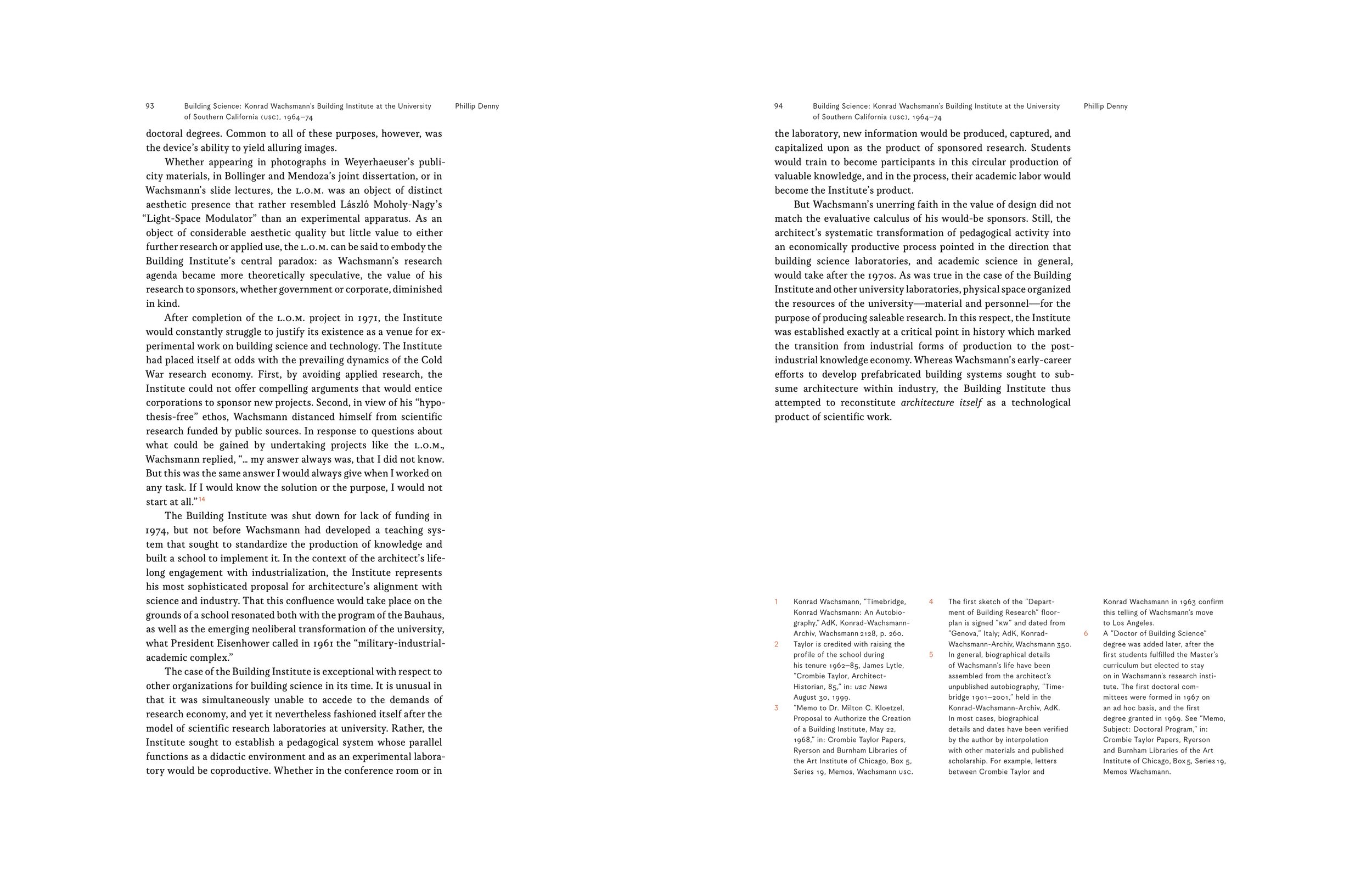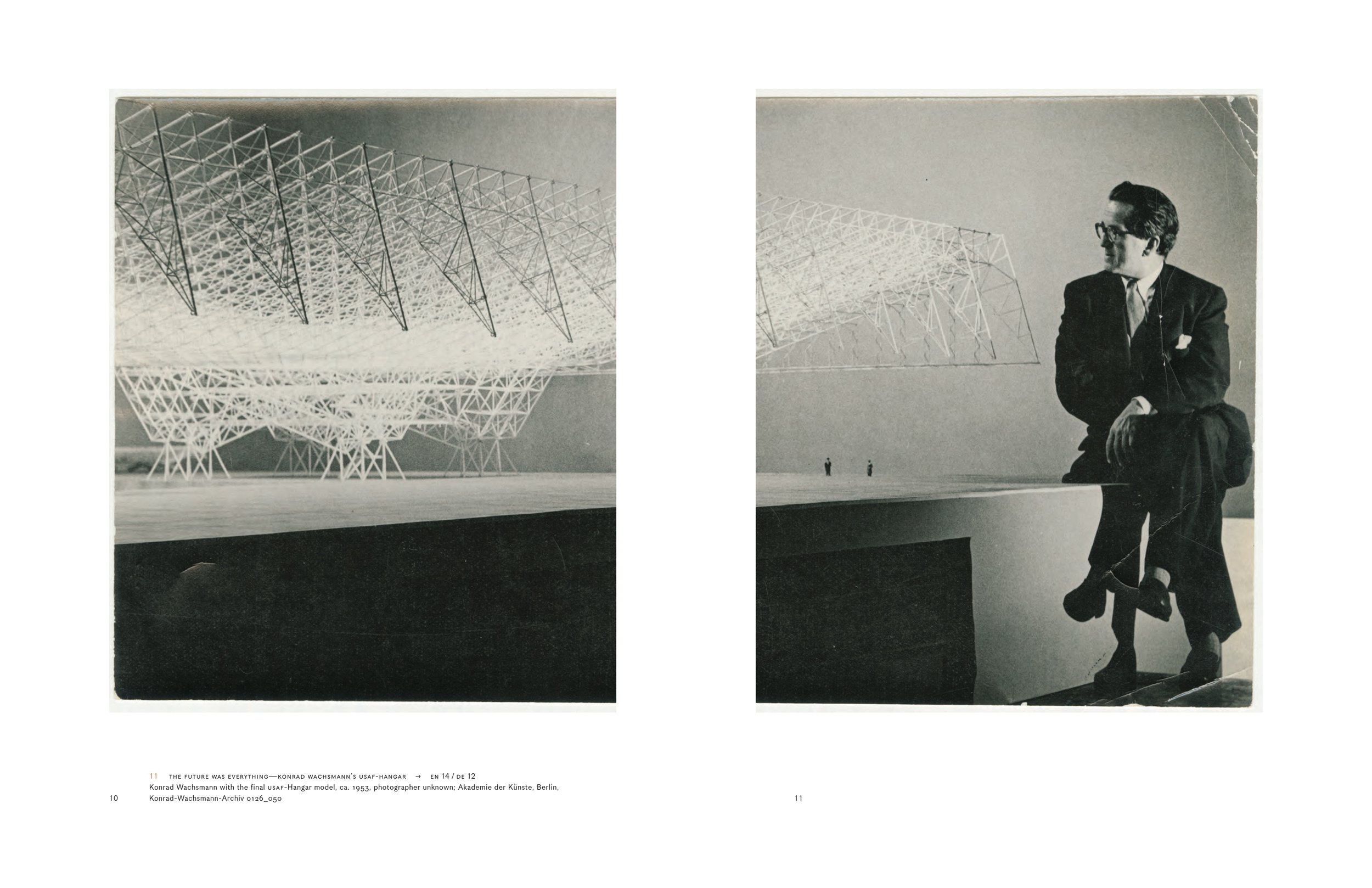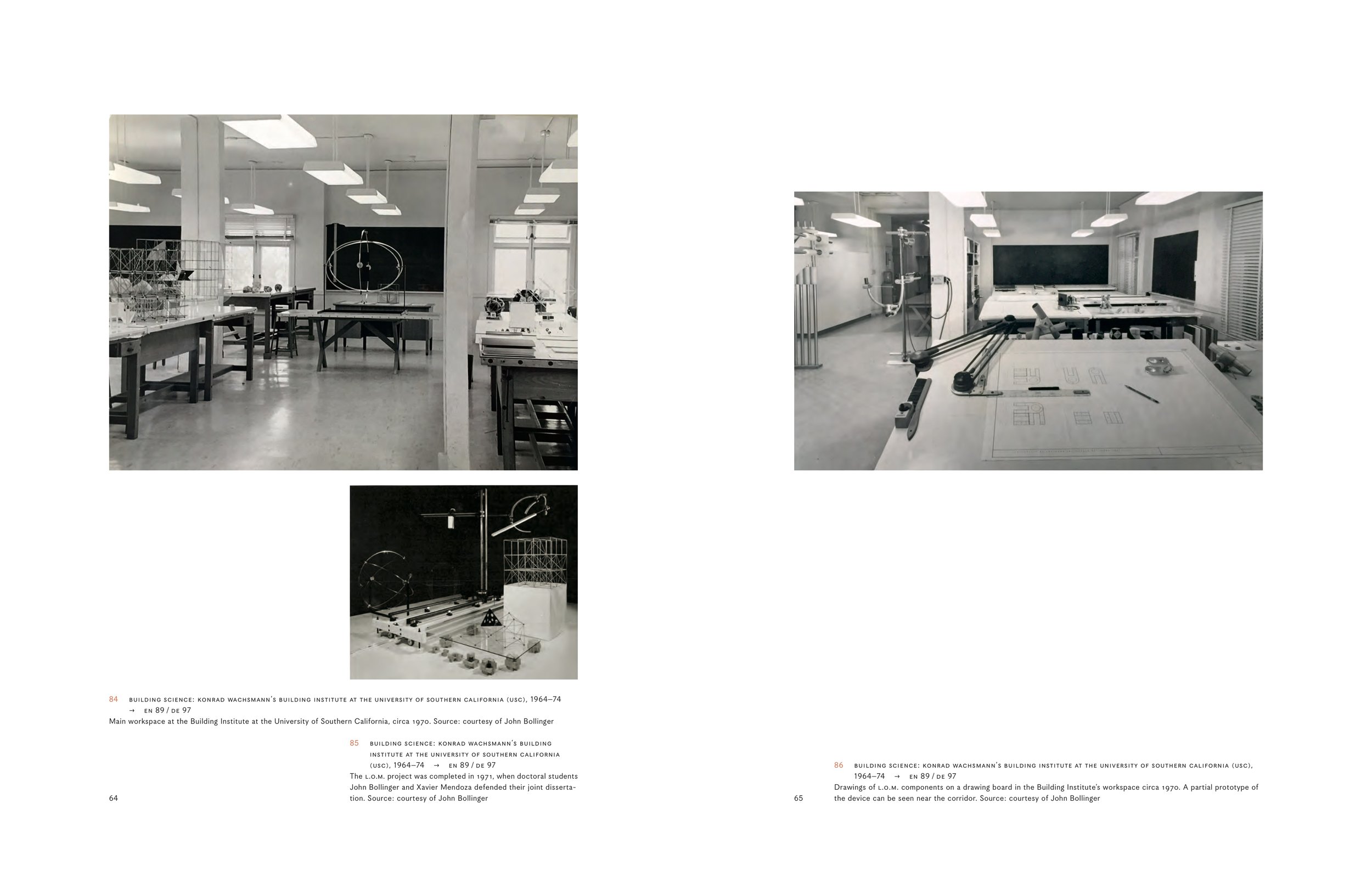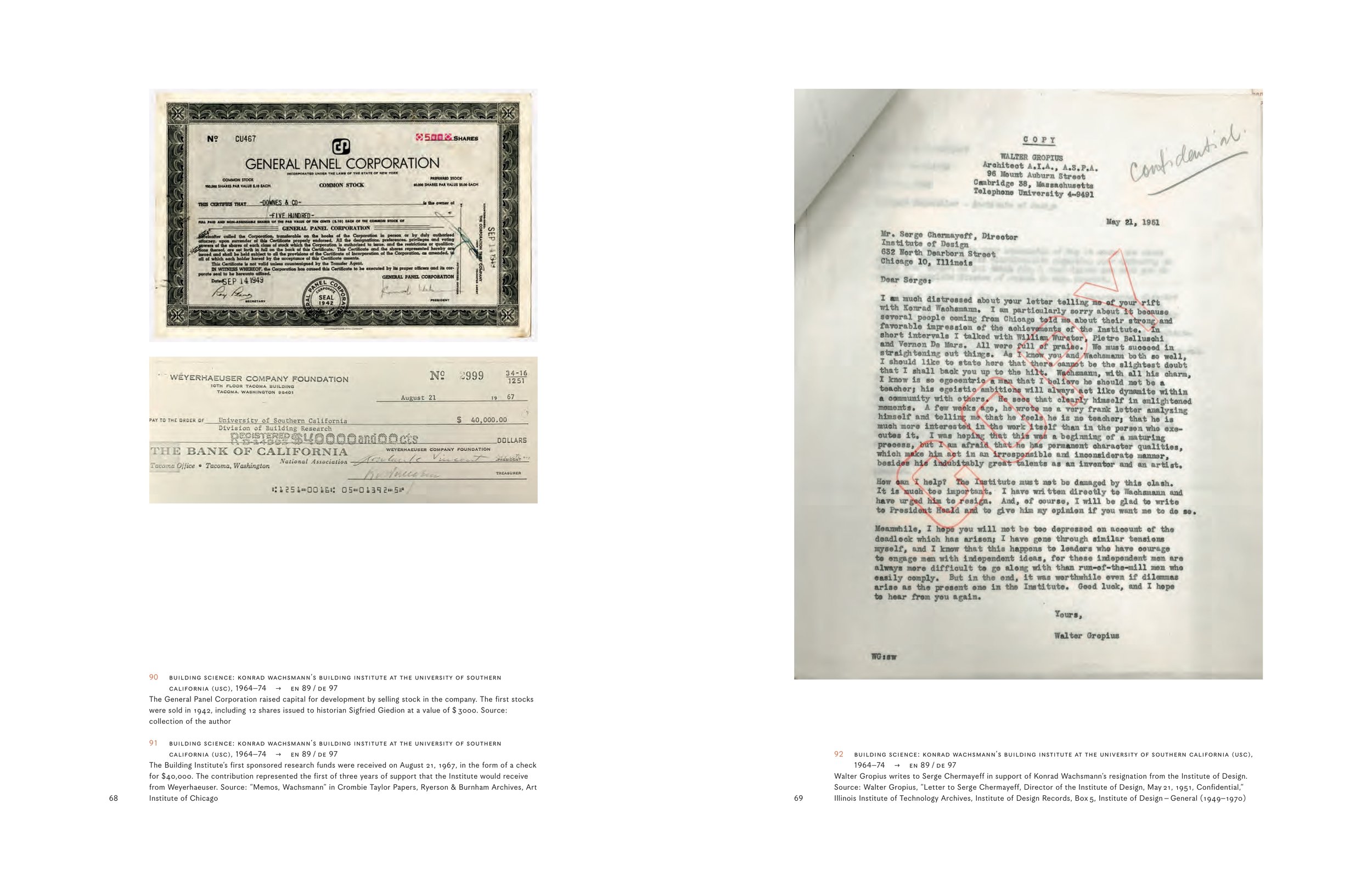Stressing Wachsmann: Strukturen für eine Zukunft/Structures for a Future
Return to Books
Download “Building Science” (EN)
In 1951, Konrad Wachsmann and his department at the IIT received a commission from the US Air Force to investigate no less than a completely new method of construction based on the structural models he had already developed. The iconographic model of the US Air Force Hangar developed from this work was a true “turning point in building”: the structure designed represents an almost futurist promise of a fully industrialized building culture, the conceptual image of which also became the direct inspiration for various architectural avant-gardes.
Stressing Wachsmann attempts to finally place Konrad Wachsmann’s achievement appropriately in architectural history and to critically compare the mental and material conditions involved in the construction of buildings at that time and today.
Contribution: “Building Science: Konrad Wachsmann at USC” in Stressing Wachsmann: Strukturen für Eine Zukunft (Vienna: Angewandte, 2020; in English and German), 89–95.








